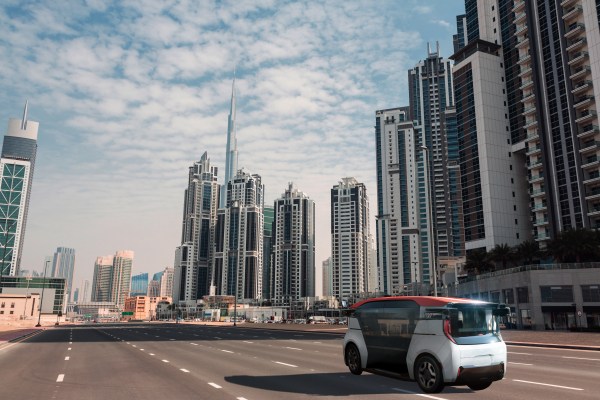Cruise is making good on its promise to launch an autonomous driving service in Dubai. Just a few weeks after the General Motors-backed AV company officially launched its commercial driverless operations in San Francisco, Cruise has sent two of its autonomous Chevrolet Bolt electric vehicles to Dubai to begin mapping the city in preparation for a planned launch in 2023, according to Dubai’s Roads and Transport Authority (RTA).
Last April, Cruise signed a partnership agreement with the RTA to open a robotaxi service there as part of UAE ruler Sheikh Mohammed bin Rashid Al Maktoum’s vision to convert 25% of total transportation trips in Dubai to self-driving trips by 2030. After a “comprehensive, multi-year process to choose the best possible partner,” Cruise was chosen as Dubai’s exclusive robotaxi provider until 2029.
The two Chevy Bolts, which began mapping operations Sunday, will initially be deployed in the Jumeirah area of the city, a residential strip along the beach, and driven by humans with special training. Cruise’s sensor suite includes lidar, radar and cameras to collect data about the car’s surrounding environment which can then be used to create a virtual map for the autonomous driver.
Cruise had said previously that the robotaxi service in Dubai will use Cruise Origins, the company’s purpose-built all-electric shuttle that has no steering wheel or pedals. Mattar Al Tayer, the director-general of RTA said in a statement that he hopes to reach 4,000 Cruise Origins in Dubai by 2030.
However, Cruise doesn’t currently have any Origins in operation, and has only built Origins for the purpose of closed course testing so far, according to a Cruise spokesperson. The company did not respond in time for requests for more information, but it’s likely Cruise will begin Dubai operations using the tried and true Chevy Bolts.
It’s also not clear what the process of achieving a self-driving service in Dubai will look like, given the UAE’s different regulatory environment. In San Francisco, Cruise followed a roadmap that included testing its AVs with drivers behind the wheel before opening up a free service to employees, followed by the public. Cruise then began charging for rides with drivers behind the wheel while simultaneously testing its fleet with no driver. The company then, again, opened its driverless service up to employees first, then the public, before it was finally able to charge fees for it.
Much of this process was determined by California’s strict regulatory environment around testing and deploying AVs, but Cruise will probably follow some of the same steps in Dubai. The city is taking an aggressive approach to integrating self-driving transport across all modes of public transport, from taxi and metros to buses and shuttles, and wants to set a global example for policy and legislation regarding self-driving transport.
